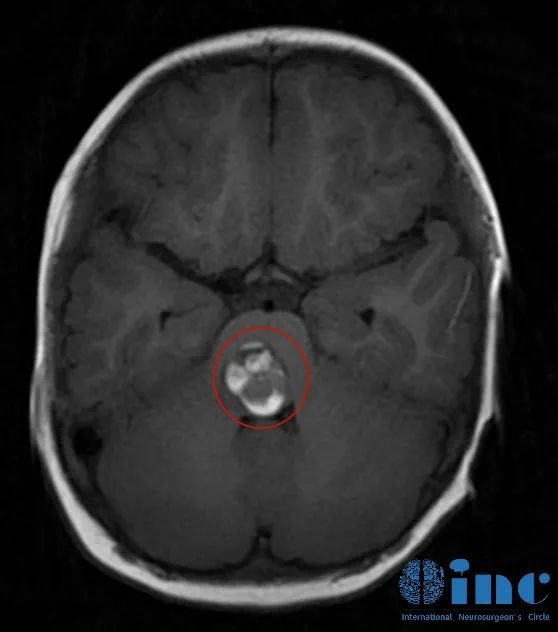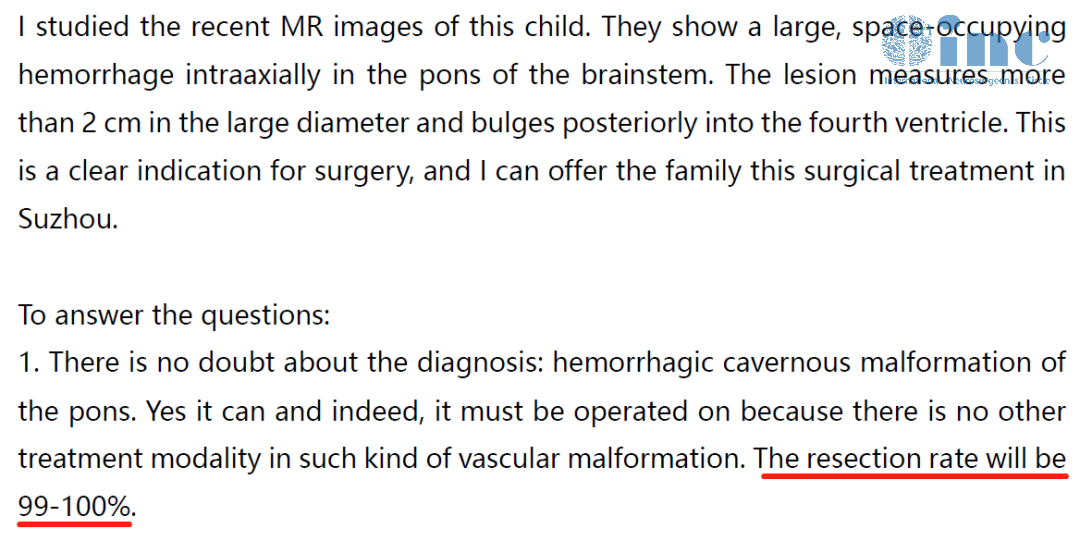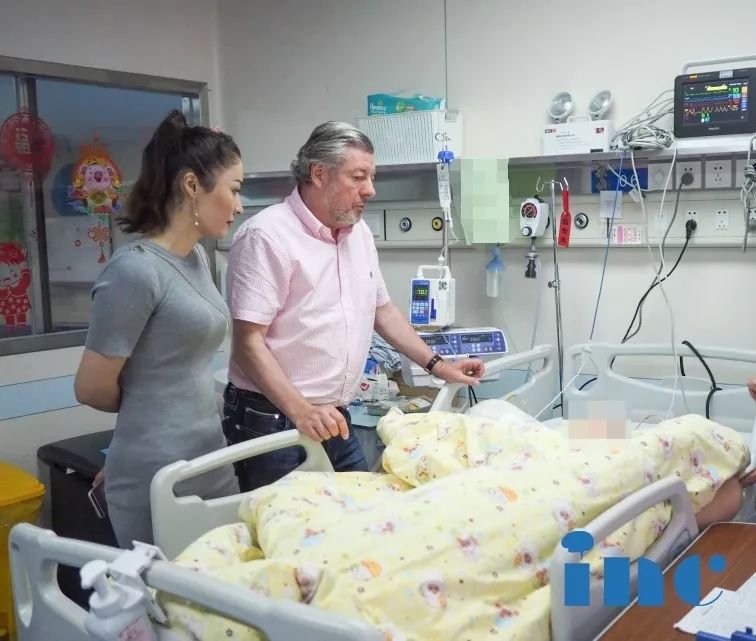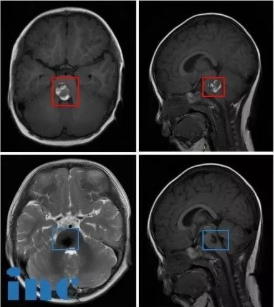Tim was one of the lucky children being admitted for Professor Bertalanffy's surgical demonstrations in 2019. That time, he was just one year old when he was diagnosed with a brainstem cavernoma. How is he doing now, three years after the professor had completely resection the cavernoma? Did it recur? Were his growth and development affected anyhow after the surgery?
Most recent follow-up: three years after resection of a brainstem cavernoma, the little "athlete" has growing strongClimbing, playing basketball, jumping around on the bed, playing with his toys... the follow-up videos of Tim show a boy who loves to play. Now he is almost five years old, attending the middle class of kindergarten. He is just the same as all the other children, every day full of energy, always a smile on his face, as if his body had inexhaustible energy. Three years ago, however, this now cheerful, happy boy was living with a cavernous hemangioma of the brainstem. When his parents think back to these days, they are still haunted by the fear of how close they had come to the unthinkable.
In the follow-up video interview, Tim's father recalled the events from three years prior: "I am grateful to God for the opportunity INC gave us to consult with one of the world's most accomplished neurosurgeons. Our decision at the time was right. Compared with so many other children with brain tumors, we were very lucky. " Speaking of his child's recovery, Tim's father said: "The child has recovered very well. His speech, his mobility are no different from the other children his age. We are extremely satisfied with the outcome of the surgery. He really loves sports. Tim now learns to play basketball and practices everyday. He is also adapting well to the kindergarten, he is a little "influencer" there."Tim's most recent MRI control showed no signs of recurrence three years after the surgery. During these three years, the symptoms Tim had before the surgery - eye movement disorder, mild facial palsy, strabismus, unsteady gait - have fully recovered.
Halfway though our last video follow-up with the father, Tim appeared in front of the camera and politely greeted our INC staff" Hello, uncle doctor!" Then he sat on this fathers lap, making cute faces at our staff and putting on his Ultraman mask. It was heart-warming to see what had become of the once one year old toddler. Then in mortal danger, tied to the hospital bed, now a vivid, athletic, healthy little man.
Tim's father also shared some advice for parents of children with similar brain tumors: When you learn that your child has a brain tumor, you have to take into account, in order to improve their chances of long-term survival and to achieve the best possible quality of life, parents have to base their decisions on the specific disease of their child as well as their financial situation. Taking these into account, they should then go and seek out the best treatment options available. It could mean to make an appointment with a foreign specialist, who can achieve total or subtotal resection of the tumor. This way, parents don't have to regret their decisions about the child's treatment, as they did everything in their power to give their child the best chances for recovery.
Surgery Review: The journey of a 1.5 year old boy with brainstem cavernomaA risky brainstem surgery
Three years ago, Tim's parents took their child for a cranial MRI scan. The child had shown suspicious symptoms for about 20 days, including strabismus of both eyes, an involuntary twisting of his head, unsteady walking and others. As they soon found out, these symptoms were caused by the bleeding of a ruptured brainstem cavernoma. The local physician stated that a brainstem hemorrhage constitutes an acute neurological emergency that could be life-threatening if not operated on in time. However, since the lesion was deeply located in the brainstem, the nerve center of the human body, a "no-go area" for surgeons. In addition, since Tim was still a very young child, risk of intra-operative complications were very high, and the surgery would require most effective cooperation between the anesthetist, the surgeon, the nurses etc. All these factors made this a highly complex case. The slightest carelessness during the surgery could easily cause irreversible damage to the neurovascular structures surrounding the lesion, leading to complete or partial facial palsy, vision loss, lifelong strabismus or - even more serious - respiratory failure necessitating a tracheotomy.
The location of Tim's brainstem cavernoma

The German Specialist: We can achieve total resection with surgery. The recurrence rate will be close to zero.
Tim's parents had been looking for help in numerous neurosurgical clinics in China. But they couldn't get the treatment their child needed, either because of the great risks of the surgery, or because of the serious complications the surgery would cause, or because of the fact that in most Chinese hospitals there is a waiting list for surgeries. As the next hemorrhage could happen anytime, there was absolutely no time to wait. That was the point, when Tim's parents felt the most anxious and helpless. In the midst of their desperation, Tim's father came across the news of the "German Professor Bertalanffy, master of skull base and brainstem surgery, is coming to China for surgical demonstrations." Finally, they found hope.
Asking around in their circle of patients with similar diseases, the parents learned that Professor Bertalanffy had more than 20 years of experience, successfully performing surgeries in complex locations such as the skull base, the thalamus, the brainstem, etc. They also watched the Xinhua News coverage of Professor Bertalanffy's surgeries in April 2022 and INC's interviews with the professor. Finally, the parents decided to contact INC and seek a consultation with Professor Bertalanffy to find out whether their child could receive surgery in China.
Professor Bertalanffy gave them an evaluation that just delighted the parent's hearts: Their child had a clear indication for surgery, in fact, surgery was the only effective treatment for brainstem cavernoma. Once the cavernoma was resected, the recurrence rate would be as low as 0-2%. There was no need to travel abroad for treatment. Their child could receive the surgery at home, and the resection rate would be 99-全切.

Professor Bertalanffy's evaluation of Tim's condition
"We will not hesitate to pay any price to see our child recover and live a life just like any other kid." Tim's parents decided to apply for one of the few slots available for surgery. The staff of INC arranged for a smooth transfer and admission to the new hospital and coordinated all matters related to the surgery with the hospital. One week before the scheduled surgery, Tim was admitted to the Children's Hospital of Soochow University, where Professor Bertalanffy would perform pediatric surgery demonstrations.
Complete removal of the lesion with wonderful results
Before the surgery, Professor Bertalanffy examined Tim's condition and spoke with his parents. About Tim's condition, Professor Bertalanffy stated that brainstem cavernoma with an active hemorrhage would often result in catastrophic events with a high mortality rate. As long as a timely and accurate diagnosis could be established, followed by timely surgery, a good outcome could still be obtained. The higher the surgical resection rate, the higher the patient's chances of a good recovery.
After Professor Bertalanffy had talk to the parents, he then discussed the case with the surgeons of the Children's Hospital who cooperated with him on the surgery. Based on the lesion's characteristics, such as location and relation to healthy structures, they determined a minimally invasive surgical approach. The surgery was performed by Professor Bertalanffy as primary surgeon and Professor Wang Hangzhou of the Children's Hospital as assistant surgeon. With the help of electrophysiological monitoring and making use of the high-magnification microscope, Professor Bertalanffy could avoid important nerve nuclei and tracts inside the brainstem, first clearing the surrounding hematoma before slowly and completely peeling off the approximately 2cm large cavernoma from the pons of the brainstem. The whole intervention took about four hours.

Post-operative inspection by Professor Bertalanffy
On the second day after having received such a complex surgery, Tim was released from the intensive care unit. The involuntary twisting of his head, that had plagued him frequently before the surgery, had disappeared, and his slightly droopy eyelid on the left side began to improve. The strabismus of both his eyes showed improvement as well, and he could move his eyes in a normal manner. His other pre-operative symptoms started to recover, too. One week after the surgery, Tim was discharged fro the hospital. A follow-up examination one and a half month after the surgery confirmed that his pre-operative strabismus as well as his unsteady walk had disappeared. His facial palsy had also become better and he had regained normal mobility. There were no new complications. Now, three years later, freed from his disease, Tim is full of energy, and his parents are filled with joy and gratitude.

Pre- and post-operative images